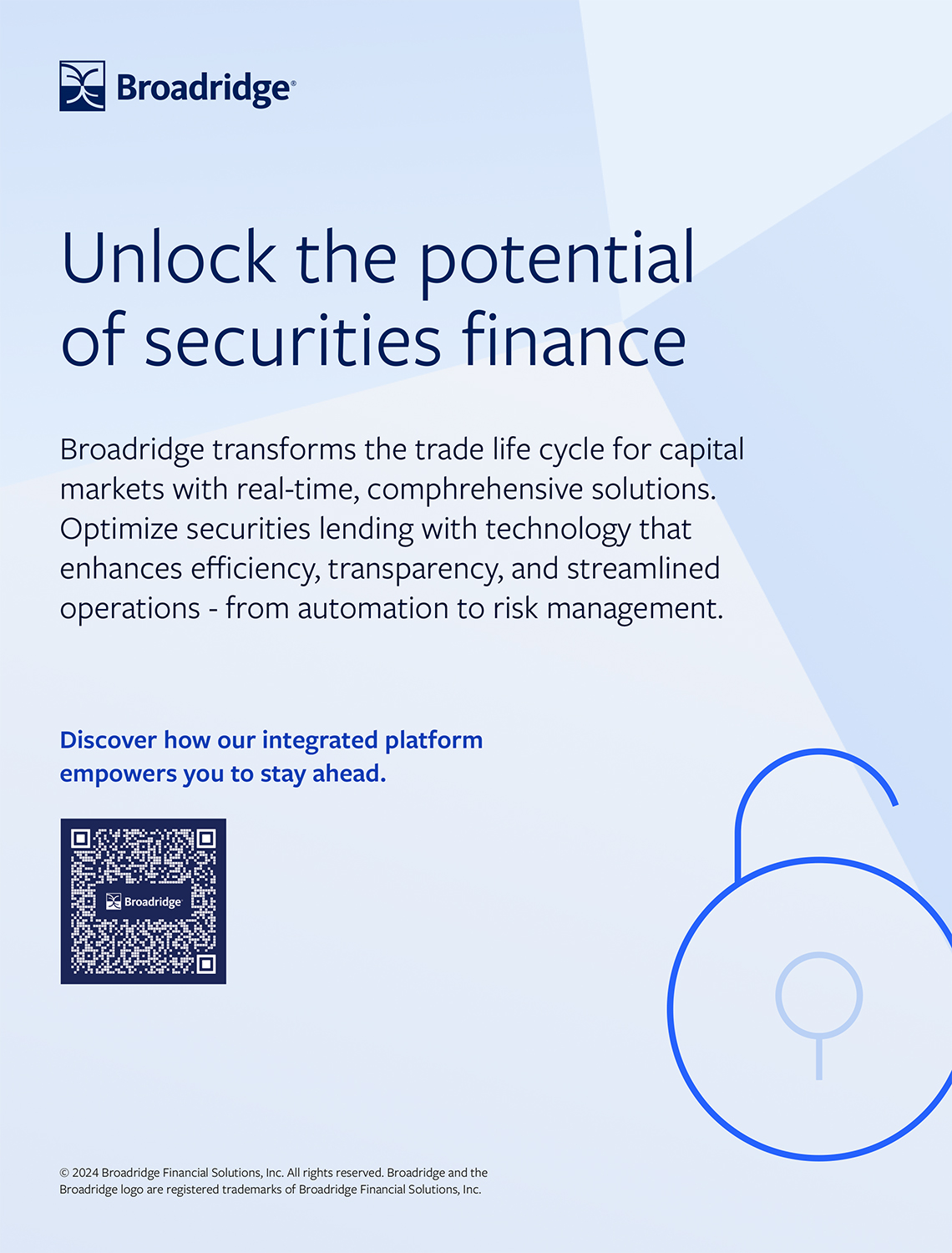IMN: Automation is becoming “increasingly relevant” for borrowers
10 May 2022 US
 Image: Murrstock/stock.adobe.com
Image: Murrstock/stock.adobe.com
Automation is becoming increasingly relevant when transacting with borrowers, according to a panel at the IMN Beneficial Owners’ International Securities Finance and Collateral Management conference
Marney McCabe, senior vice president at Brown Brothers Harriman, notes that BBH has put a “tremendous” amount of investment into automation. She says: “Automation is becoming increasingly relevant when transacting with borrowers and a very important tool when optimising returns for our clients.”
After spending several years with a big focus on data transparency for their clients, BBH’s largest focus is on execution. “We have very attractive lendable assets, but they are only as good as the counterparties that we are engaging with. What we are finding is the counterparties that we are engaging with have higher expectations from automation and increased matching.”
Echoing a similar sentiment, head of agency lending at Fidelity Investments Justin Aldridge, says the firm intends to enhance its distribution capabilities via its automated lending technology, which is a centrepiece of Fidelity’s offer.
The “State of Play for the Global Securities Finance Market” panel — which also heard from vice president of securities finance at S&P Global Market Intelligence Melissa Gow and eSecLending CEO Craig Starble — found that many firms were increasing their technology investment, particularly in tools that aid beneficial owners in monitoring the performance of their lending programmes and ensuring that the parameters of their programmes are being met.
Firms are also incorporating environmental, social and governance (ESG) data in securities finance loans, and eventually plan to do so with collateral. The objective is to assist with the process of determining when to vote or when to hold, in relation to proxy voting.
Starble notes that there is a forced technology focus for agent lenders on regulations including the Securities Financing Transactions Regulation (SFTR) and Central Securities Depositories Regulation (CSDR).
“We have spent a lot of time building out technology and working with industry utilities to prepare ourselves for the various new regulatory implementations such as SFTR and CSDR. The same will likely be needed for the eventual SEC 10c-1 Proposal.” Starble explains.
“We also spend a lot of time automating more of our front-to-back trading and operational functionality by interfacing with some of the existing platforms that are being built in the industry. These technology utilities are becoming invaluable to our marketplace.”
Starble highlights the importance of pinpointing whether new technology initiatives will change the revenue data for clients.
Although being innovative and building interesting technology is great from a visionary perspective, it becomes hard to justify technology investment, in the long list of things firms have to do, if this does not translate into revenue improvement.
Marney McCabe, senior vice president at Brown Brothers Harriman, notes that BBH has put a “tremendous” amount of investment into automation. She says: “Automation is becoming increasingly relevant when transacting with borrowers and a very important tool when optimising returns for our clients.”
After spending several years with a big focus on data transparency for their clients, BBH’s largest focus is on execution. “We have very attractive lendable assets, but they are only as good as the counterparties that we are engaging with. What we are finding is the counterparties that we are engaging with have higher expectations from automation and increased matching.”
Echoing a similar sentiment, head of agency lending at Fidelity Investments Justin Aldridge, says the firm intends to enhance its distribution capabilities via its automated lending technology, which is a centrepiece of Fidelity’s offer.
The “State of Play for the Global Securities Finance Market” panel — which also heard from vice president of securities finance at S&P Global Market Intelligence Melissa Gow and eSecLending CEO Craig Starble — found that many firms were increasing their technology investment, particularly in tools that aid beneficial owners in monitoring the performance of their lending programmes and ensuring that the parameters of their programmes are being met.
Firms are also incorporating environmental, social and governance (ESG) data in securities finance loans, and eventually plan to do so with collateral. The objective is to assist with the process of determining when to vote or when to hold, in relation to proxy voting.
Starble notes that there is a forced technology focus for agent lenders on regulations including the Securities Financing Transactions Regulation (SFTR) and Central Securities Depositories Regulation (CSDR).
“We have spent a lot of time building out technology and working with industry utilities to prepare ourselves for the various new regulatory implementations such as SFTR and CSDR. The same will likely be needed for the eventual SEC 10c-1 Proposal.” Starble explains.
“We also spend a lot of time automating more of our front-to-back trading and operational functionality by interfacing with some of the existing platforms that are being built in the industry. These technology utilities are becoming invaluable to our marketplace.”
Starble highlights the importance of pinpointing whether new technology initiatives will change the revenue data for clients.
Although being innovative and building interesting technology is great from a visionary perspective, it becomes hard to justify technology investment, in the long list of things firms have to do, if this does not translate into revenue improvement.
NO FEE, NO RISK
100% ON RETURNS If you invest in only one securities finance news source this year, make sure it is your free subscription to Securities Finance Times
100% ON RETURNS If you invest in only one securities finance news source this year, make sure it is your free subscription to Securities Finance Times



